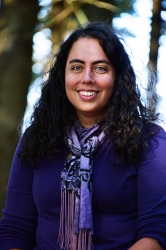I’ll never forget the day when my first-grade student walked into music class complaining about how boring classical music was. I rapidly made a change in my lesson plan, and told the students to put on their “imagination caps.” I told them I was going to play music for them that had a story to it, and they needed to figure out what that story was. I hit play on some of that “boring” stuff and paid extra attention to my young friend. Within 15 seconds, his face was aglow with excitement, and he couldn’t bring himself to sit still. When the two-minute clip was over, his hand shot up and he told me the most fantastical story of a daring rescue that I had ever heard.
When everyone finished sharing, I asked what type of music that was, and everyone chimed in with “Fun!” I responded with: “But classical music is boring!” Needless to say, they disagreed, and I never again heard that sentence from any of those students in the four years I taught them. In fact, they often begged for more “imagination cap” classes.
In my classroom, I have a listening station which consists of a small CD/MP3 player and five sets of child-safe headphones plugged into a splitter. I also have a small shelf with paper and a basket with markers and pencils. While some students are working on their skills with particular instruments, others can be listening to music and creating “listening maps” as we call them. Students are told that the music they are listening to describes a journey, and they are encouraged to illustrate that journey with a map. For example, if the music portrays someone walking through a forest, they will draw a road with trees on the way. As the music changes, the landscape changes until the final destination is reached. This is an excellent and easy way to keep the students engaged in their listening.
In all of my years of teaching, I have not yet met a student who doesn’t enjoy a good story. There are many compositions that are written in story form for children to listen to, and learn about sounds, instruments, or even theories. Two of my favorites are “Peter and the Wolf,” by Sergei Prokofiev, and “The Young Person’s Guide to the Orchestra,” by Benjamin Britten.
There are, of course, many apps and countless websites available to help with teaching music, but I have found that what my students connect the most meaning with is their own personal experiences with music. If you have the chance to take them to a concert, they will always remember it, but the next best option is to bring the concert hall to the classroom. The more students listen to music, and find themselves engaged in creating and connecting meaning with what they are hearing, the more freely they are able to express and communicate with others they contact.
Music is all around us and is constantly filling our minds. What makes it so incredibly powerful? We may not fully understand this until heaven, but while we’re here, we can seek to understand it better and pass this knowledge on to our students. Some schools are blessed to have the budget to hire part-time or full-time music teachers. Other schools have their teachers teach music within their classrooms. In any of these cases, it’s possible to give students an experience with music that will not only enrich their lives but bring them to a deeper understanding of their Creator, so that they can have a closer walk with Him. This has been the premise of my music classroom for the past ten years. What an amazing gift God has given us with this ability to express emotion and beauty, and what a privilege we have to be able to teach this subject to His precious children!

